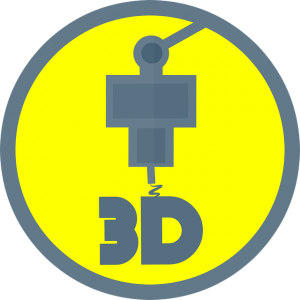
3D printing has become synonymous with manufacturing. Research, in fact, indicates it’s the most popular prototyping method used by manufacturing companies. Using a 3D printer, manufacturing companies can quickly build prototypes for testing and quality assurance purposes. While there are many different types of 3D printing processes, though, nearly all of them consist of three basic steps. So, what are the three basic steps of 3D printing exactly?
Step #1) Modeling
Before a manufacturing company can build an object with a 3D printer, it must design the model using computer software. Modeling is the first step of 3D printing. Manufacturing companies typically design object models using a special type of computer software known as a computer-aided design (CAD) package. Once complete, the object model is saved as a stereolithography (STL) or an additive manufacturing file (AMF) format.
During the modeling step, manufacturing companies will check the model file for errors. Most CAD packages are able to detect errors that, if ignored, could cause defects in the printed object. Common errors found in model files include holes, self-intersections, manifold errors and faces.
Step #2) Printing
The second step of 3D printing involves printing, or building, the object. Assuming there are no errors in the STL or AMF file, the manufacturing company can upload it to the 3D printer. The 3D printer will use the instructions in the respective file to dictate where and how the material is deposited.
Most 3D printers build objects by depositing layers of material onto a bed. The 3D printer will build the bottom layer first, after which it will build the next-highest layer. 3D printers may use different materials to build objects, though thermoplastic is the most common material used for this process. Thermoplastic pellets or beads are extruded out of the printer head, at which point they fall onto the bed where they form the printed object.
Step #3) Finishing
The third and final step of 3D printing is finishing. As the name suggests, finishing involves making the final touches on the printed object. Solvents, for example, may be added to the printed object to eliminate any superficial imperfections while also creating a smoother surface finish. Alternatively, if supports were used to hold the object during printing, they’ll have to be removed during this third and final step.
In Conclusion
3D printing is typically performed in three steps. The first step involves designing the object model in a CAD package. The second step involves building the object with a 3D printer. The third step consists of finishing where the final touches are made.
Do you have a prototype that has been stuck in your head? We can help get it out of your head and into your hands with our 3D printing portal.
No tags for this post.